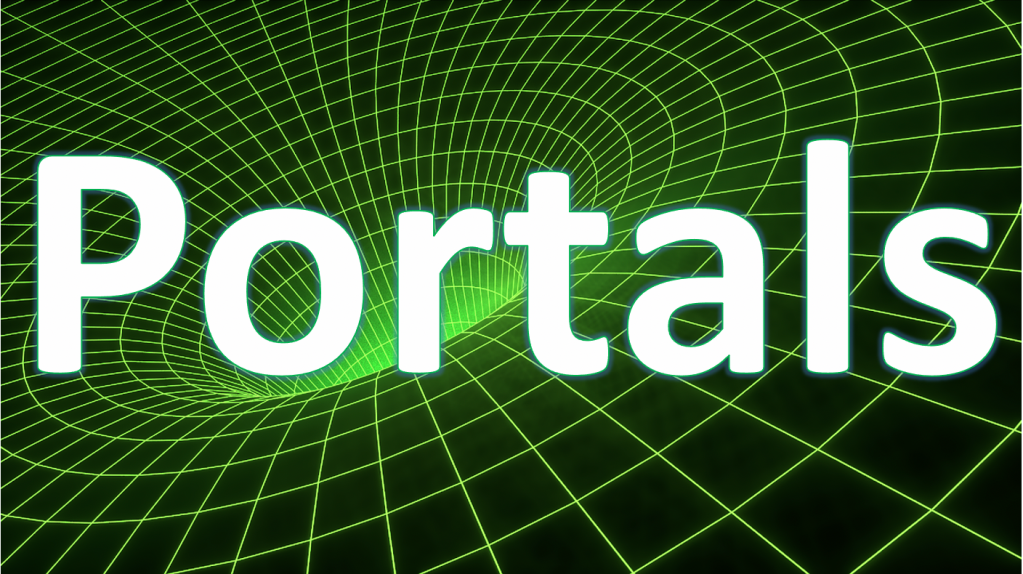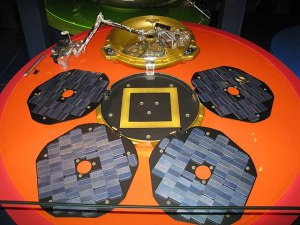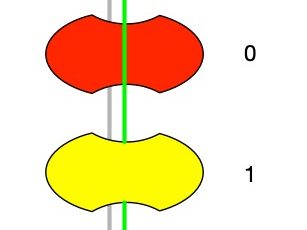All previous posts -- Pac-Man and Games for Girls
The invisible dice mystery – a magic trick underpinned by computing and maths
T. V. Raman and his virtual guide dogs
Designing for autistic people
Can you trust a smile?
Testing AIs in Minecraft
Computers that read emotions
Neurodiversity and what it takes to be a good programmer
The top 10 bugs
Do something computationally funny for money
Calculating Pi for Pi Day
Could AI end science?
Find your own time zone – #BSW24
The Social Machine of Maths
Software for Justice
Designing robots that care
A visit to the Turing Machine: a short story
Lego Computer Science: Turing Machines Part 3: the program
AMPER: AI helping future you remember past you
Lego Computer Science: Turing Machines Part 2: the controller
Lego Computer Science: Turing Machines Part 1: the tape
Singing bird – a human choir, singing birdsong
Eggheads: helping us to visualise objects and classes
Ethics – What would you do? Part 2: answers
Ethics – What would you do?
Equality, diversity and inclusion in the R Project: collaborative community coding & curating with Dr Heather Turner
Tonight, 8pm on BBC Four – the first of three Christmas Lectures for young people on Artificial Intelligence
CS4FN Advent Calendar – Day 25 bonus Christmas crackers: have you ever seen this cracker joke?
CS4FN Advent 2023 – Day 25: Merry Christmas! Today’s post is about the ‘wood computer’
CS4FN Advent 2023 – Day 24: Santa’s Sleigh – track its progress through the skies
CS4FN Advent 2023 – Day 23: Bonus material – see “Santa’s sleigh” flying overhead
CS4FN Advent 2023 – Day 23: Father Christmas – checking his list, spotting the errors
CS4FN Advent 2023 – Day 22: wreaths and rope memory – weave your own space age computer
CS4FN Advent 2023 – Day 21: stars and celestial navigation
CS4FN Advent 2023 – Day 20: where’s it @? Gift tags and internet addresses
CS4FN Advent 2023 – Day 19: jingle bells or warning bells? Avoiding computer scams
CS4FN Advent 2023 – Day 18: cracker or hacker? Cyber security
CS4FN Advent 2023 – Day 17: pocket-switching networked reindeer
CS4FN Advent 2023 – Day 16: candy cane or walking aid: designing for everyone, human computer interaction
CS4FN Advent 2023 – Day 15: a candle: optical fibre, optical illusions
CS4FN Advent 2023 – Day 14: Why is your internet so slow + a festive kriss-kross puzzle
CS4FN Advent 2023 – Day 13: woolly hat: warming versus cooling
CS4FN Advent 2023 – Day 12: Computer Memory – Molecules and Memristors
CS4FN Advent 2023 – Day 11: the proof of the pudding… mathematical proof
Virtual reality goggles for mice
CS4FN Advent 2023 – Day 10: #AI – Holly, Ivy and Alexa – chatbots & the useful skill of file management. Plus win at noughts and crosses
CS4FN Advent 2023 – Day 9: gingerbread man – computing and ‘food’ (cookies, spam!), and a puzzle
CS4FN Advent 2023 – Day 8: gifts, and wrapping – Tim Berners-Lee, Right to Repair & another computing puzzle
CS4FN Advent 2023 – Day 7: Computing for the birds: dawn chorus, birds as data carriers and a Google April Fool (plus a puzzle!)
CS4FN Advent 2023 – Day 6: patterned bauble: tracing patterns in computing – printed circuit boards, spotting links and a puzzle for tourists
CS4FN Advent 2023 – Day 5: snowman: analog hydraulic computers (aka water computers), digital compression, and a puzzle
CS4FN Advent 2023 – Day 4: Ice skate: detecting neutrinos at the South Pole, figure-skating motion capture, Frozen and a puzzle
CS4FN Advent 2023 – Day 3: snowflakes – make your own six-sided HexaHexaFlexagon with our templates
CS4FN Advent 2023 – Day 2: Pairs: mittens, gloves, pair programming, magic tricks
CS4FN Advent 2023 – Day 1: Woolly jumpers, knitting and coding
Free event for families and schools: the Christmas Lectures from the Royal Institution
Cartoons, comics and computer games – Ada Lovelace’s graphic novel
Blade: the emotional computer.
Exploring mazes, inventing algorithms (part I)
Why the Romans were pants at maths
Beheading Hero’s mechanical horse – an early ‘magical’ (nearly headless) automaton from Ancient Greece
“The Truth About AI” – get ready to get tickets to the Ri Christmas Lectures 2023 #XmasLectures with @Ri_Science
How far can you hear? Modelling distant birdsong.
Threads & Yarns – textiles and electronics
3D models in motion
Frequency Analysis for Fun
Keeping secrets on the Internet – encryption keeps your data safe
Composing from Compression
Balls, beams and quantum computers – performing calculations with patterns of light
Getting off the beach, fast
“A mob for the Earth” – online communities and flashmobs supporting the environment and businesses too
Competitive Zen
Pit-stop heart surgery
Cyber Security at the movies: Rogue one (Part II: Authentication)
Happy World Emoji Day – 📅 17 July 2023 – how people use emoji to communicate and what it tells us about them 😀
Cyber Security at the movies: Rogue one (Part I: Physical Security)
When a chatbot acts as your “trusted” agent …
Nurses in the mist
Negligent nurses? Or dodgy digital? – device design can unintentionally mask errors
Screaming Headline Kills!!!
Putting your hand up a cow’s bottom
Bitten blue
Free CS4FN magazine issue 29 arriving in schools now, on Diversity in Computing
Creating great game worlds
Hallucinating chatbots
Protecting your fridge
The gender shades audit
Playing the weighting game
Collecting mini-beasts and pocket monsters
“Tlahcuilo”, a visual composer
Follow those ants
The first computer wizard
A Godlike Heart
Mary Clem: getting it right
Black in Data
Reclaim your name
Al-Jazari: the father of robotics
A PC Success
In space no one can hear you …
The last piece of the continental drift puzzle
Digital lollipop: no calories, just electronics!
The tale of the mote and the petrel
Fran Allen: Smart Translation
A gendered timeline of technology
Operational Transformation
Engineering a cloak of invisibility: manipulating light with metamaterials
Alexander Graham Bell: It’s good to talk
Manufacturing Magic
Solving problems you care about
Sameena Shah: News you can trust
Object-oriented pizza at the end of the universe
Stretching your keyboard – getting more out of QWERTY
Is ChatGPT’s “CS4FN” article good enough?
Understanding Parties
A machine wrote this post – OpenAi’s ChatGPT
Mood Gloves
What the real Pros say
Susan Kare: Icon Draw
Celebrating Jean Bartik – she was one of six women who programmed the ‘ENIAC’, a computer from the 1940s
What’s that bird? Ask your phone – birdsong-recognition apps
Spot the difference – modelling how humans see the world
Inspiring Wendy Hall
Barbara Liskov: Byzantine birthdays
Marissa Mayer: Lemons Linking 41 Shades of Blue – A/B Testing
Opinions, Opinions, Opinions
Joyce Wheeler: The Life of a Star
The Devil is in the Detail: Lessons from Animal Welfare? (Temple Grandin)
Ingrid Daubechies: Wiggly lines help catching crime
Mark Dean: An Inspiration
100,000 frames – quick draw: how computers help animators create
Edie Schlain Windsor and same sex marriage
Understanding matters of the heart – creating accurate computer models of human organs
The Dark History of Algorithms
Lego Computer Science: Logic with Truth Tables
Lego Computer Science: Truth Tables
Jacquie Lawson: the multi-million pound greeting
Ludwig Wittgenstein: tautology and truth tables
Alan Turing’s life
Cognitive crash dummies
Chatbot or Cheatbot?
Daphne Oram: the dawn of music humans can’t play
Kimberly Bryant, founder of Black Girls Code, born 14 January 1967
Bringing people closer when they’re far away
Hedy Lamarr: The movie star, the piano player and the torpedo
Gary Starkweather (b 9 Jan 1938) invented the laser printer and colour management
Lynn Conway: revolutionising chip design
Sorry to bug you: Grace Hopper
The first computer music
Swat a way to drive
Future Friendly: Focus on Kerstin Dautenhahn
The last speaker
The joke Turing test
The Chinese room: zombie attack!
The paranoid program
How does Santa do it?
Pepper’s Ghost: an 1860s illusion used in ‘head-up displays’
Making sense of squishiness – 3D modelling the natural world
Watching whales well – the travelling salesman problem
A round up of our posts for #BlackHistoryMonth 2022
Recognising (and addressing) bias in facial recognition tech #BlackHistoryMonth
Happy Hallowe’en – free spooky puzzles and activities
Devices that work for everyone #BlackHistoryMonth
Facing up to ALL faces
Hidden Figures: NASA’s brilliant calculators #BlackHistoryMonth
Writing together: Clarence ‘Skip’ Ellis #BlackHistoryMonth
Freddie Figgers – the abandoned baby who became a runaway telecom tech star
Gladys West: Where’s my satellite? Where’s my child? #BlackHistoryMonth
Kakuro, Logic and Computer Science – problem-solving brain teasers
Cold hard complexity: learning to talk in nature’s language
Love your data
Delicious computing: gestural computing with bananas and pizzas…
Hiding in Skype: cryptography and steganography
Naked Mole-Rats Go Digital – monitoring colonies remotely (while respecting their privacy)
The heart of an Arabic programming language
Escape from Egypt
Chocoholic Subtraction – make an edible calculating Turing machine
Chocolate Turing Machines – edible computing
Microwave health check – using wearable tech to monitor elite athletes’ health
Microwave Racing – making everyday devices easier to use
Can a computer tell a good story?
Patterns for Sharing – making algorithms generalisable
Your own electrical sea: sensing your movements
Playing Bridge, but not as we know it – the sound of the Human Harp
Strictly Judging Objects
Cryptography: You are what you know
Cryptography: Shafi Goldwasser and the Zero Knowledge Proof
The First Law of Humans
Dressing it up
The Mummy in an AI world: Jane Webb’s future
The naked robot
Lego computer science: What is computation (simple cellular automata)?
Shirts that keep score
More Encrypted Deckchairs
Full metal jacket: the fashion of Iron Man
Lego computer science: binary
Let buttons be buttons
Encrypted Deckchairs
Back (page) to the drawing board
Tempest Prognosticator: look out, leeches!
Quipu: tie a knot in it
Bullseye! The intelligent dart board
The Ultimate (do nothing) machine
Simone Giertz: A pat on the shoulder
Christopher Strachey and the secret of being a Wizard Debugger
Sophie Wilson: Where would feeding cows take you?
The Hive at Kew
The beach, the missionary and my origin myth
Hoverflies: comin’ to get ya
Edge-notched cards and relational databases
The Wood Computer
Babbage’s barrels
Ada and the music machine
Ant Art
Ant Track Algorithms
Diamond Dogs: Bowie’s algorithmic creativity
The algorithm that could not speak its name
I Ching binary
Predicting the future: marble runs, binary and the I Ching
Mary Coombs, teashops and Leo the computer
A custard computer
The taming of the screw
Quicksilver memory
A storm in a bell jar
Pass the screwdriver, Igor
Babbage’s triumph over brutal reality
Nikola Tesla: the invisible genius
Babbage’s Adders
Making core rope memory
Core rope memory
An ode to technology
Swallow a slug-bot to catch a …
“The thundering engines vibrate throughout your body”
If the Beagle had landed…
Fencing the moon
Ada Lovelace in her own words
Dickens knitting in code
Understanding Ultron: A Turing test for world domination – Peter McOwan’s reassuring article that robots probably aren’t out to get us
April Fooling with computing – IP over avian carriers, PigeonRank
A Wookie for three minutes please – how Foley artists can manipulate natural and synthesised sounds for film, TV and radio
The cure that just folds away: understanding protein folding to tackle diseases, and how computers (and people) can help
Executable Biology – computing cancer using computational modelling
Lego computer science: Gray code
Lego computer science: representing numbers using position
Lego computer science: representing numbers
Lego computer science: compression algorithms
Lego computer science: pixel pictures
CS4FN Advent Calendar – bonus material: HexaFestiveFlexagons to make and colour in
Meet the chatbots
How to get a head in robotics (includes a free papercraft activity with a robot that expresses ’emotions’)
The machines can translate now
Letters from the Victorian Smog: Braille: binary, bits & bytes
Only the fittest slogans survive!
What are birds actually saying?
Stopping sounds getting left behind: the Bela computer (from @BelaPlatform)
Ada Lovelace: Visionary
I know where your cat lives (privacy and metadata)
The red sock of doom – trying to catch mistakes before they happen
Tantrix: P=NP?
Emoticons and Emotions
Knitters and Coders: separated at birth?
Die another Day? Or How Madonna crashed the Internet
The Emoji Crystal Ball
Back (page) to health
Gadgets based on works of fiction
How do you solve a problem like arthritis?
Are you there yet?
So, so tired…
Is your healthcare algorithm racist?
Solving real problems with Bayesian networks
Diagnose? Delay delivery? Decisions, decisions. Decisions about diabetes in pregnancy
Bayes’ theorem as an algorithm
Cloudy with a chance of pain
A simple Bayesian network for having a virus
Here
A graphical explanation of Bayes theorem
What are the chances of that? The church minister’s hobby and clever machines
The ping pong vaccination programming challenge
Smart health: decisions, decisions, decisions
I’m feeling Moo-dy today
Standup Robots
Sabine Hauert: Swarm Engineer
What’s on your mind?
In a New York nanosecond
Hiding in Elizabethan Binary
The optical pony express
Smart bags
Punk robots learn to pogo
The computer vs the casino: Wearable tech cheating
Sick tattoos
One in the eye for wearable tech
Smart tablets (to swallow)
i-pickpocket
AI Detecting the Scribes of the Dead Sea Scrolls
Losing the match? Follow the science. Change the kit!
DragonflyAI: I see what you see
Studying Comedy with Computers
Every Breath You Take: Reclaim the Internet
Why would you accept inefficiency?
The Cyber-Security Honeypot
The very first computers
A recipe for programming
Florence Nightingale: rebel with a cause
The Tactful Watch
HMS Belfast: destroying the destroyer
Machines Inventing Musical Instruments
Return of the killer robot? Evil scientist?! Helpless woman?!?
Who invented Morse code?
Cyber Security at the Movies: Guardians of the Galaxy (Fail Secure security)










